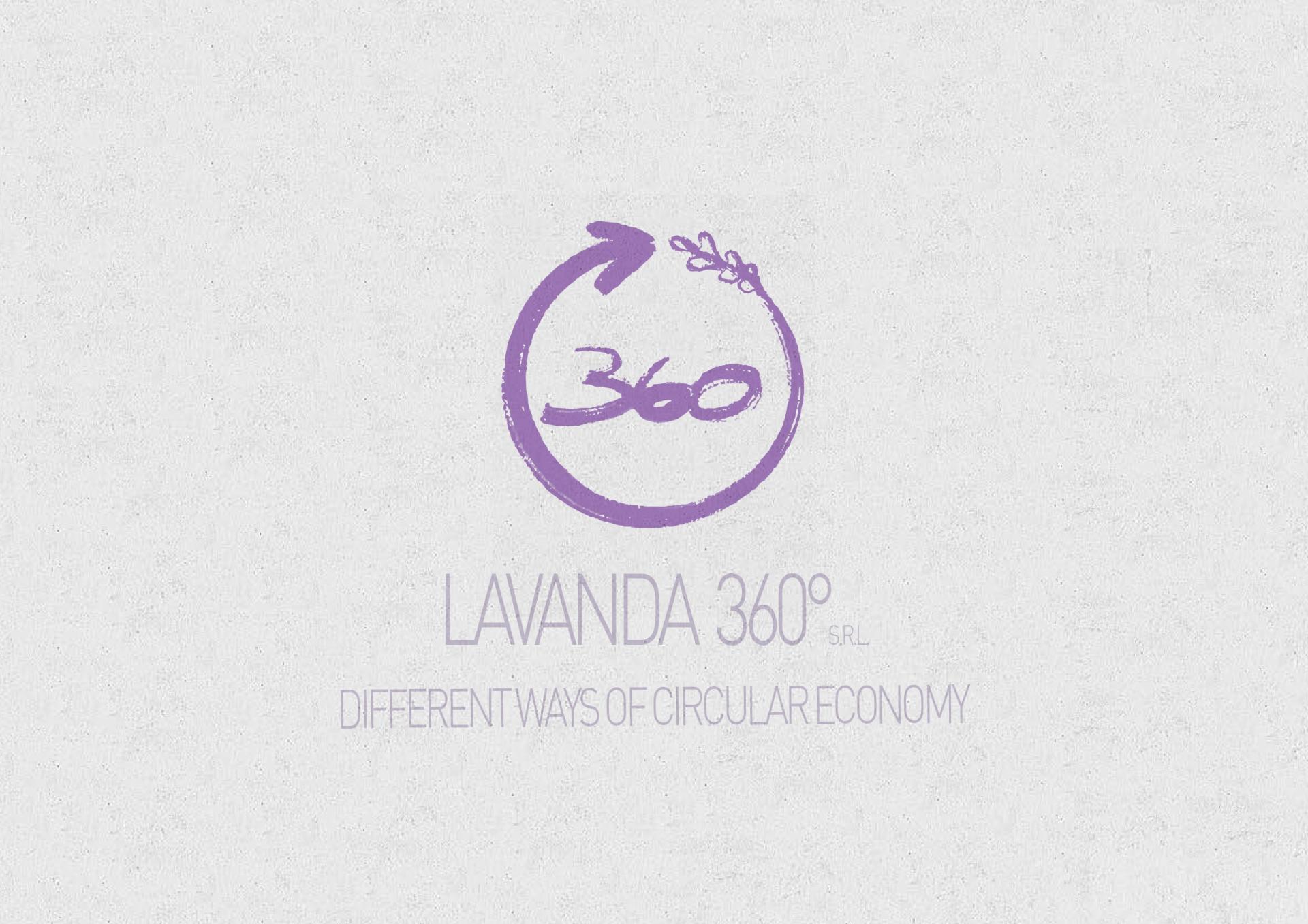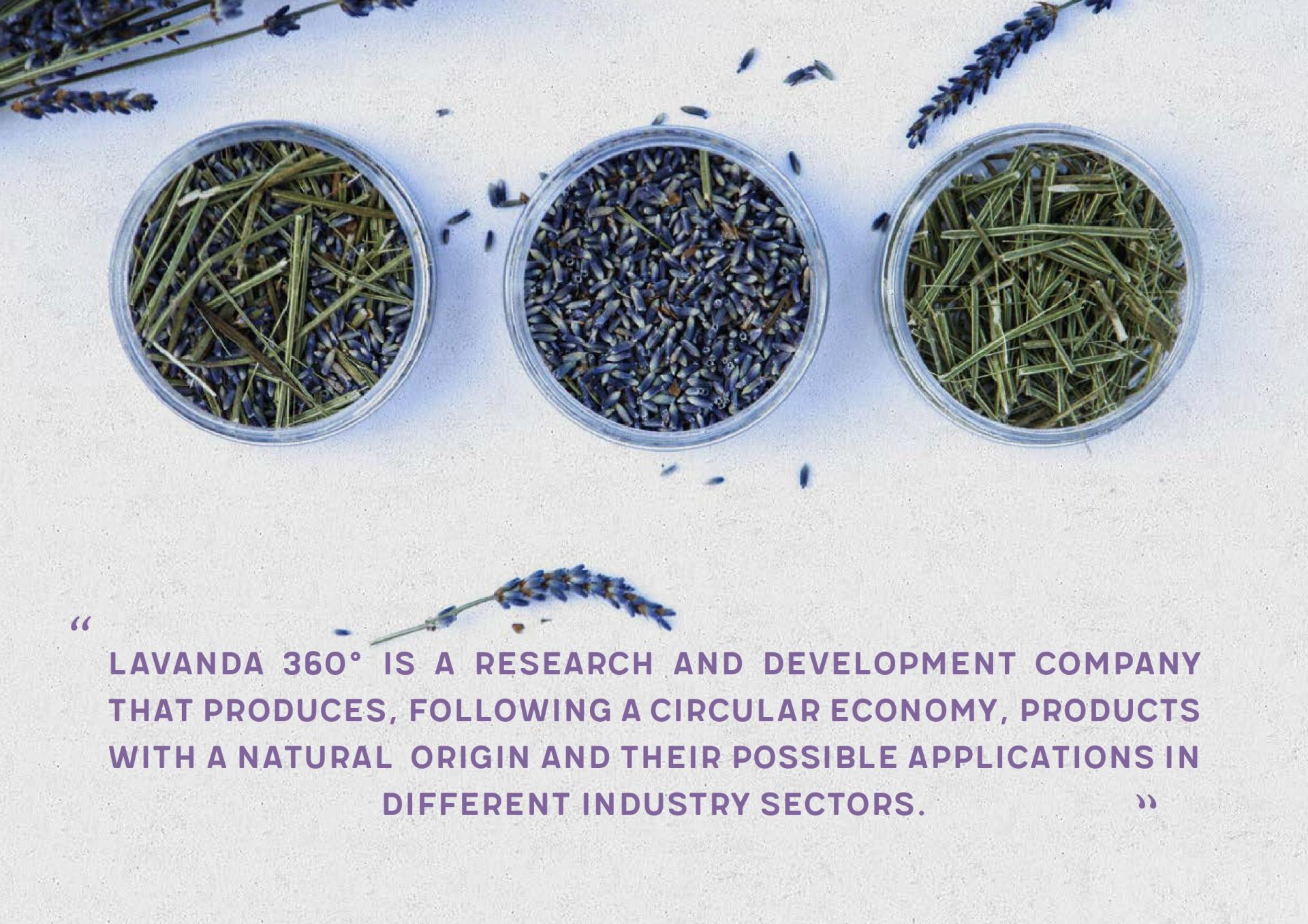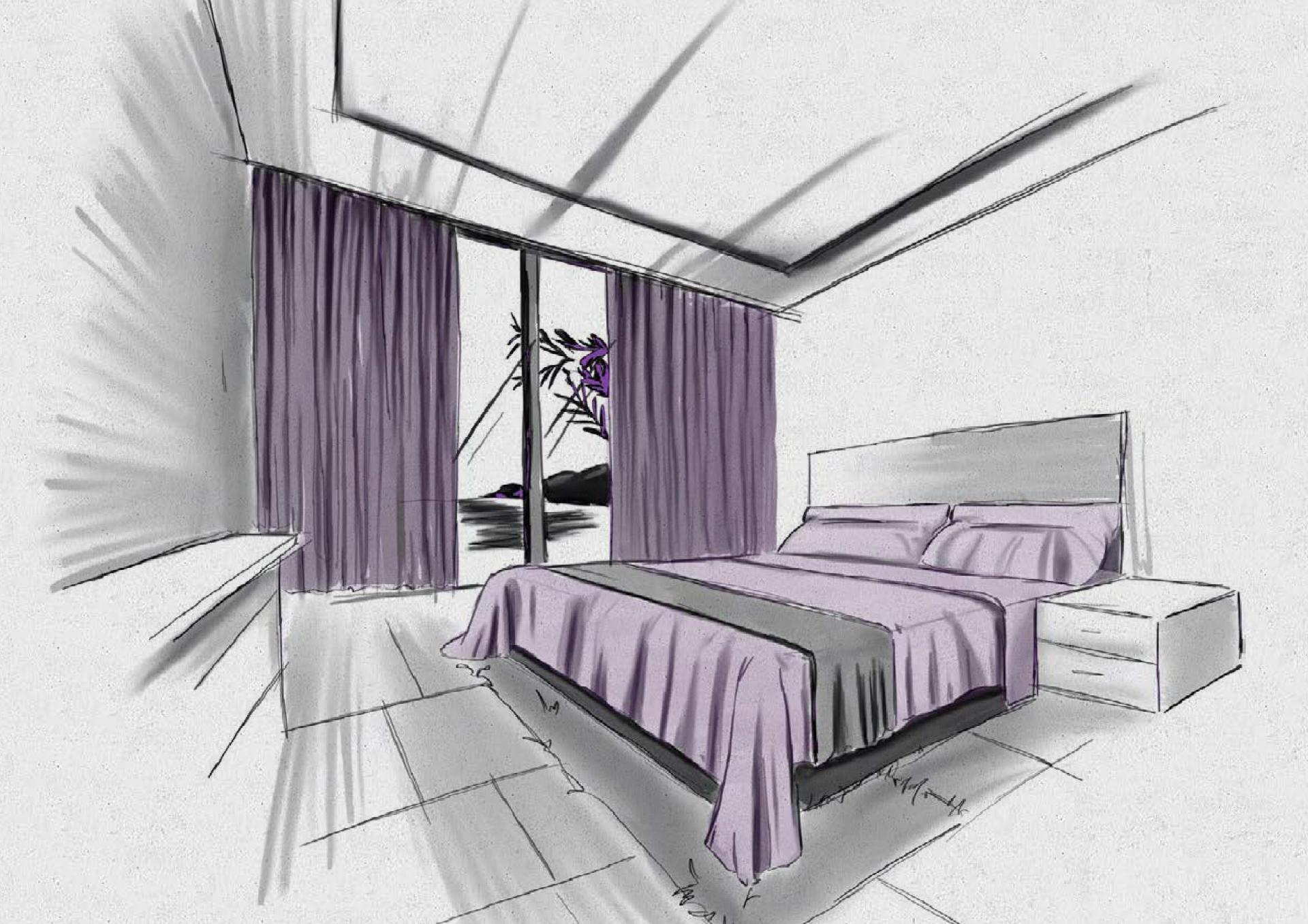Lavanda 360
Basic information
Project Title
Full project title
Category
Project Description
Lavanda 360° is a research and development company that produces, following a circular economy, products with a natural origin and their possible applications in different industry sectors.
Geographical Scope
Project Region
Urban or rural issues
Physical or other transformations
EU Programme or fund
Which funds
Description of the project
Summary
The company Lavanda 360 uses a specific technology to give new life to waste.
The waste from lavender petals and stems is recovered from which textile fibers and cellulose are obtained in order to create fabrics or niche products for applications in the world of fashion and interior design, as well as evaluating the use of cellulose for the paper market, packaging, etc.
The solution is based, first of all, on the recovery of an extremely valuable material. The lavender that is cultivated for the extraction of essential oils and for ornamental use maintains its components despite the processes undergone (processes that do not use chemichals). The studies we have already carried out on this subject show high percentages of cellulose present in the samples supplied to the laboratories with which we collaborate.
These percentages guarantee considerable volumes, enough to proceed with the extraction of cellulose and the production of the products shown above.
It should also be pointed out that the raw material used has in fact already been cultivated for other uses, thus eliminating the environmental impact that would necessarily arise if a special cultivation were to be developed for such purposes.
Obtaining cellulose from a different primary source than tree cellulose - from which all acetate fabrics, such as viscose, rayon, etc., are commonly made - would contribute considerably to safeguarding the environment. - Obtaining cellulose from a different primary source than tree cellulose - from which all acetate fabrics are commonly made, such as viscose, rayon, etc. - would contribute considerably to safeguarding our planet and making the fashion world greener and more sustainable.
We are also studying solutions to make the already known processes of fiber extraction, such as acetylation and yarn extrusion, more sustainable, by proposing new extraction methods as well.
Key objectives for sustainability
The ecological impact, which the products we offer has, is one of the greatest strengths on which we rely. Clearly, starting from a material that is classified as waste has a much lower ecological impact than any other material for which sources must be used for its production. Compared to cultivation specifically for the purpose of textile production, supply costs and environmental emissions are completely eliminated.
The starting material, i.e. the green mass of lavender, comes from the production chains of essential oils, which can certify its origin and its non-use, as waste.
Production costs are lowered as the supply costs are reduced to zero.
Production volumes can be guaranteed by the data emerging from the analyses carried out in the laboratories of the Milan Polytechnic with which we are collaborating for the development of the product. In addition, the products obtained from the processing carried out would maintain the lavender properties.
As mentioned above, our business has potentially great development and impact because it is aimed at extracting a raw material with a low ecological impact that can be used in various markets (textiles, fashion, design, packaging, paper, giftware, etc.) of global interest and aimed at a multitude of potential users. Moreover, it is a process born from the recovery of lavender but potentially replicable with other raw materials.
Our business idea contributes to the achievement of some of the seventeen United Nations Sustainable Development Goals drafted for the 2030 Agenda.
It contributes to point 8, 9 enterprise, innovation and infrastructure, point 12 responsible consumption and production, point 13 fight against climate change and point 17 partnership for the goals.
Key objectives for aesthetics and quality
There are many fields of application in different industrial realities, among the different ones we foresee the maximum expression of the final product in the field of interior design by linking it to furnishing elements or coverings, as we realize a recycled fabric that is potentially able to maintain the typical properties of the starting plant, lavender.
Among the potential markets we look at the realization of fabric, furniture accessories, papers, packagin, niche products.
Key objectives for inclusion
We have established key relationships with important partners, including : Politecnico di Milano department of chemistry, materials, and chemical engineering 'Giulio Natta', which is supporting us for the part of experimentation and prototyping of the products we designed, through a working collaboration, giving consequently job opportunities to young graduates of the chemical sector.
We have established a collaboration with the university of applied art and design IAAD giving our support to the realization of some student's projects.
When we will start the production site we will open different kind of working positions to people of every gender/category/age.
Moreover, our business idea contributes to the achievement of some of the seventeen United Nations Sustainable Development Goals (SDGs) drafted for the 2030 Agenda:
Point 8 because it would result in new jobs and employment that are potentially long-lasting, to point 9 because a new company with inclusive and sustainable ideas and values has been founded.
Transboundary because it can potentially touch more countries and realities able to increase scientific research because of collaborations.
Physical or other transformations
Innovative character
By creating a dialogue between the above, a business reality is structured that can guarantee work positions for places and people of all kinds.
Communication and sensitization strategies are implemented regarding today's issues related to ecological transition.
Public and private bodies of great importance are involved, promoting interaction and collaboration between apparently very different realities.
And finally we involve highly qualified people to support and promote the idea.



